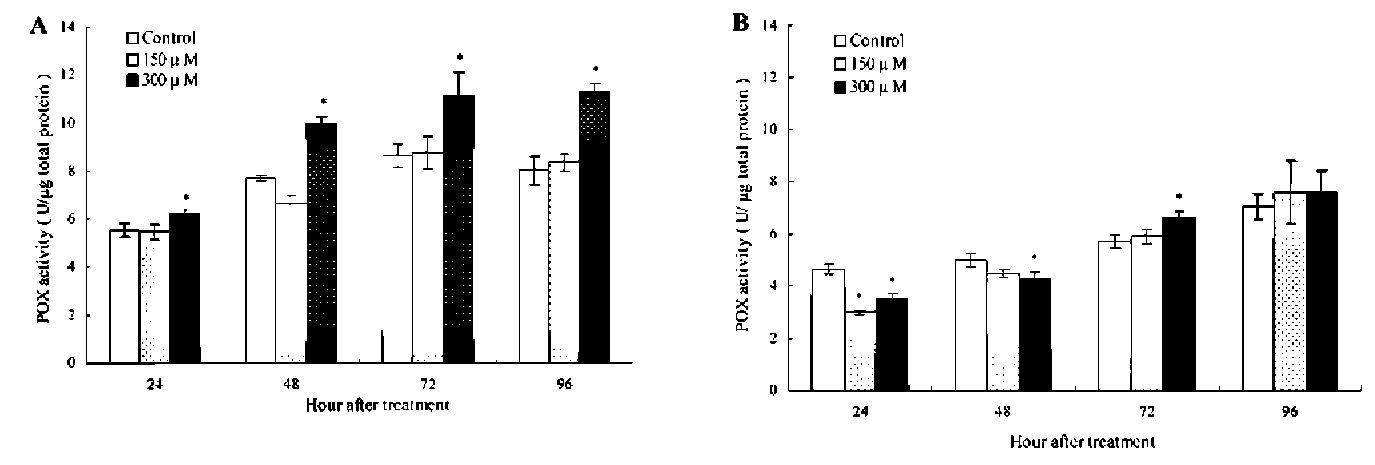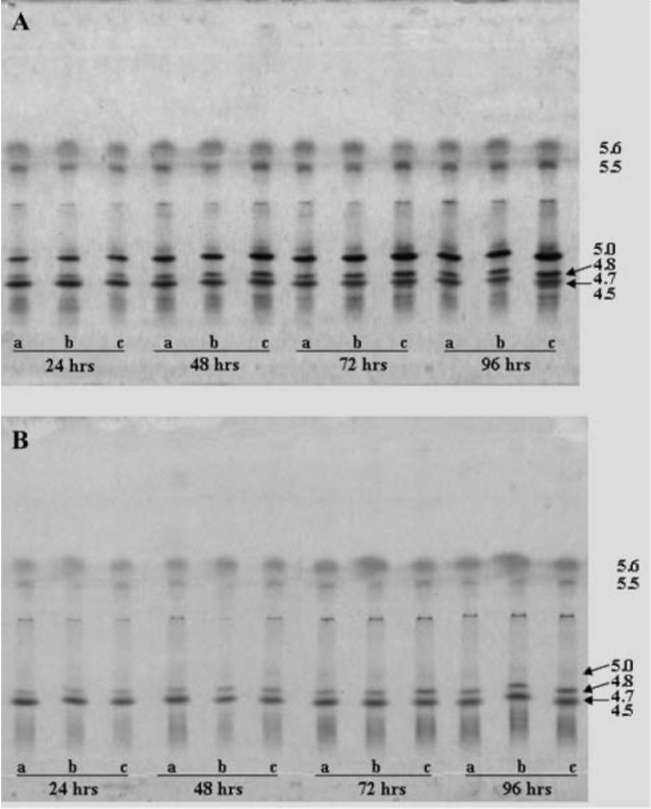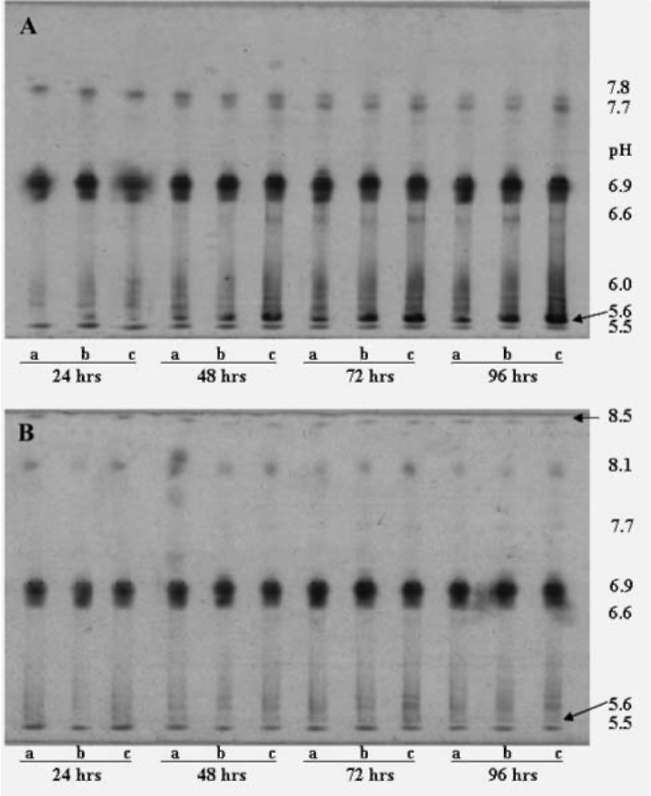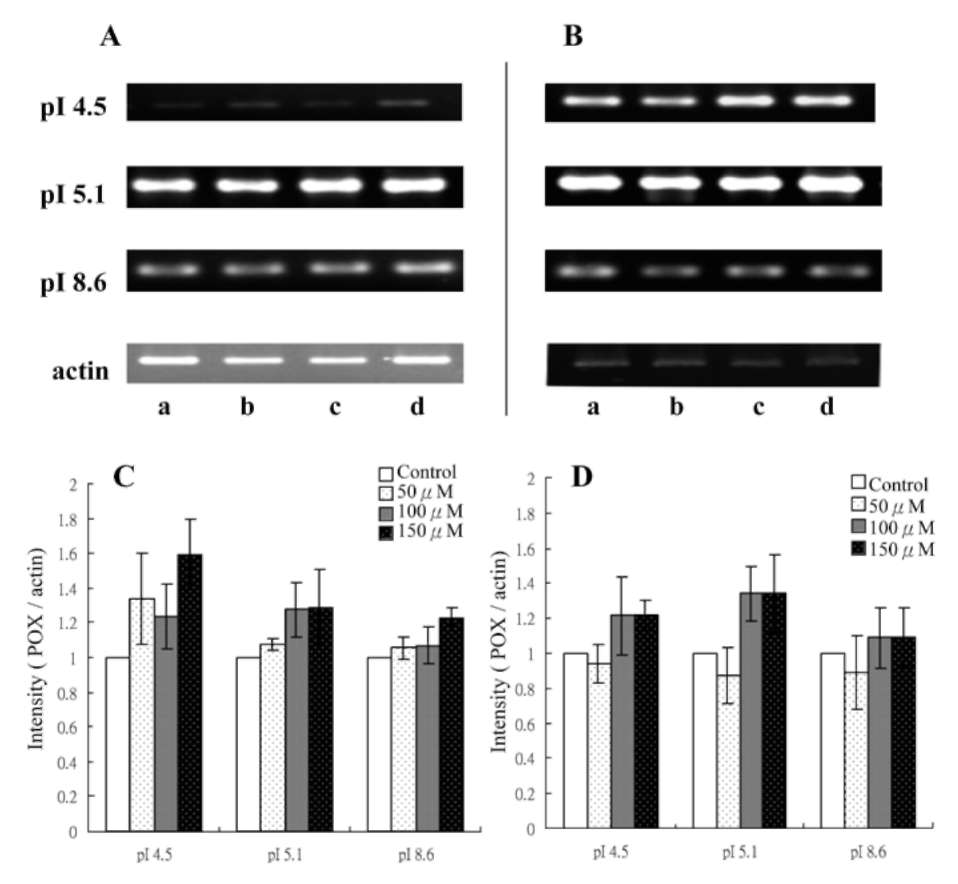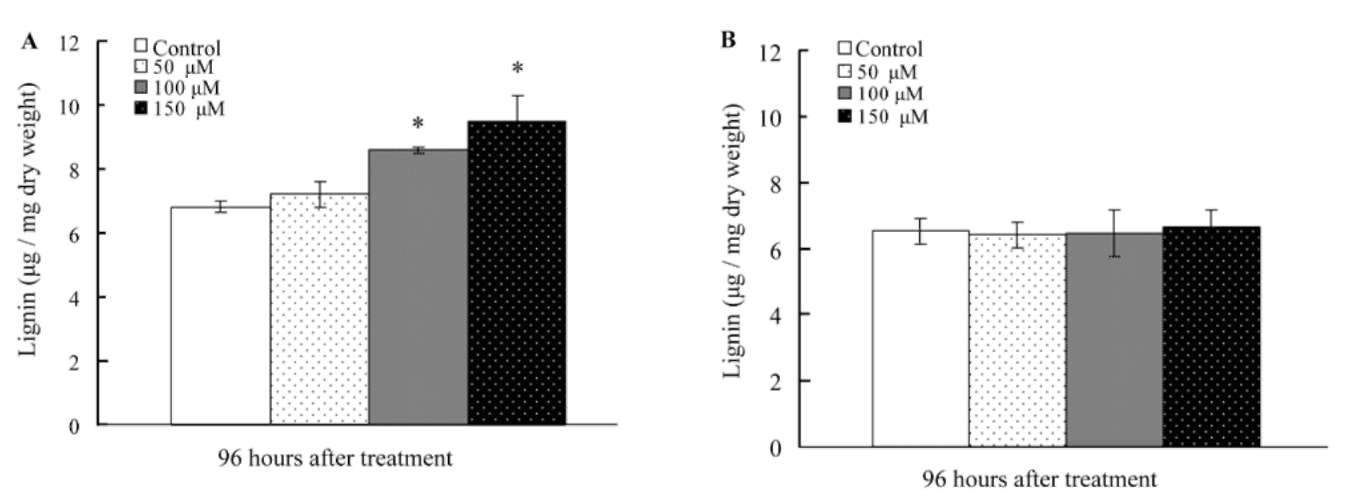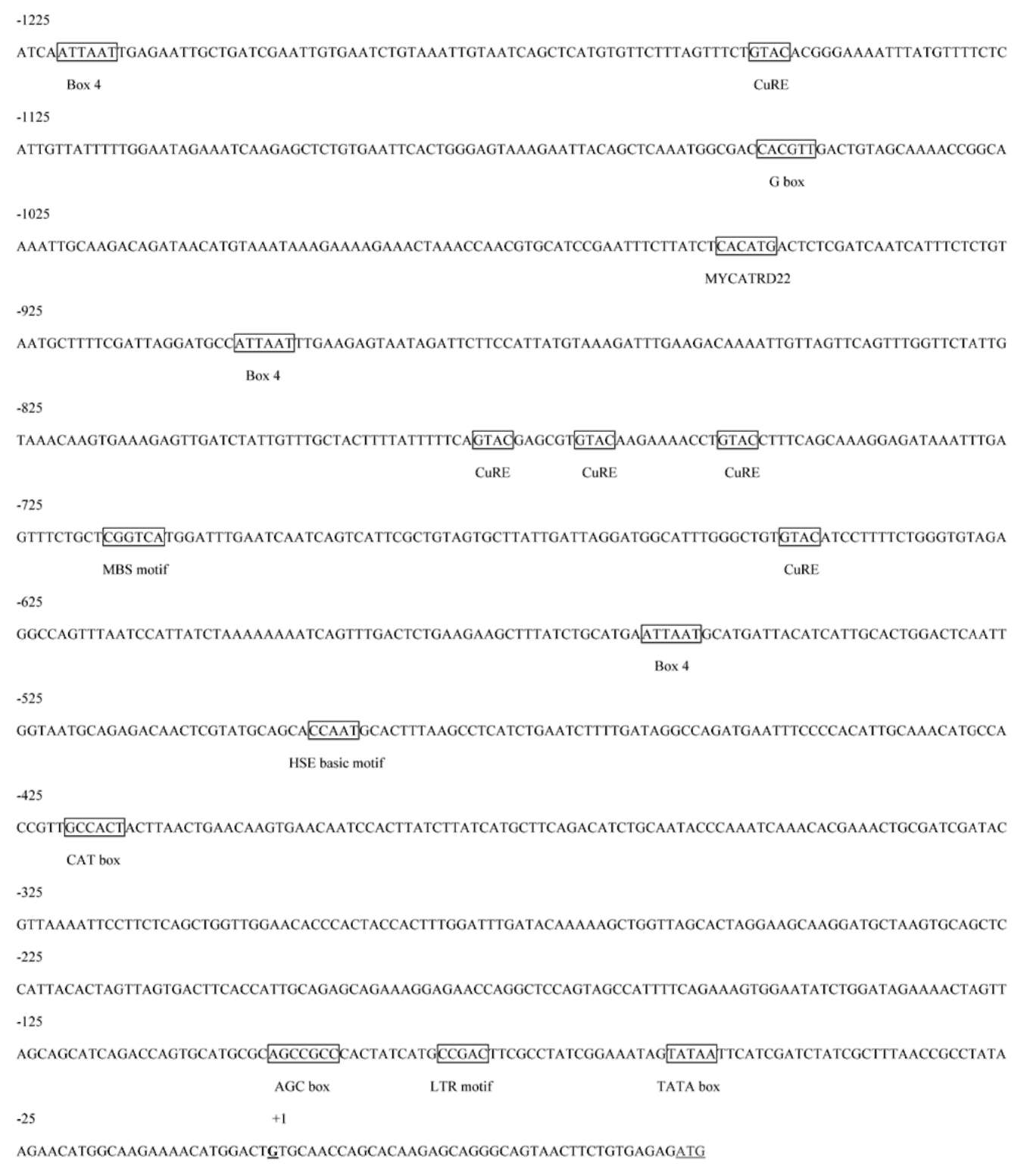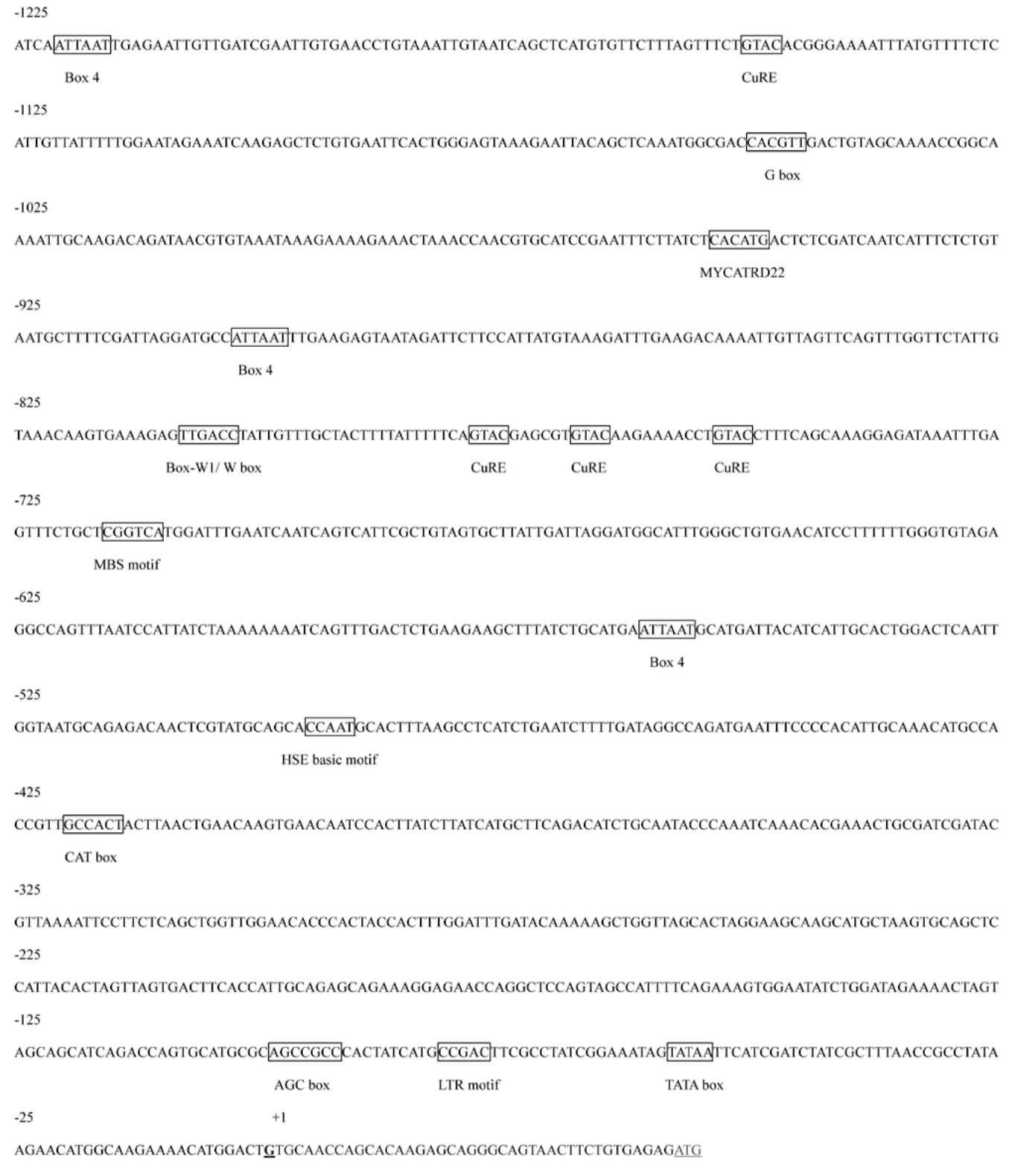34
Botanical Studies, Vol. 53, 2012
Advantage® 2 PCR Buffer, 0.2 mM of each (dATP, dTTP, dCTP, dGTP), 0.2 pM of each primer (adaptor-specific and gene-specific); 0.4 pl of ligated DNA as template (either total digestion or partially digested and size selected), and 0.4 pL of 50X AdvantageR 2 Polymerase Mix (Clontech, USA). The first PCR conditions were 94°C, 25 s; 72°C, 3 min for 7 cycles; 94。C, 25 s; 68。C, 3 min for 32 cycles, and an additional cycle at 68。C for 7 min using thermocy-cler (Gene CyclerTM, Bio-Rad, Hercules, CA, USA).
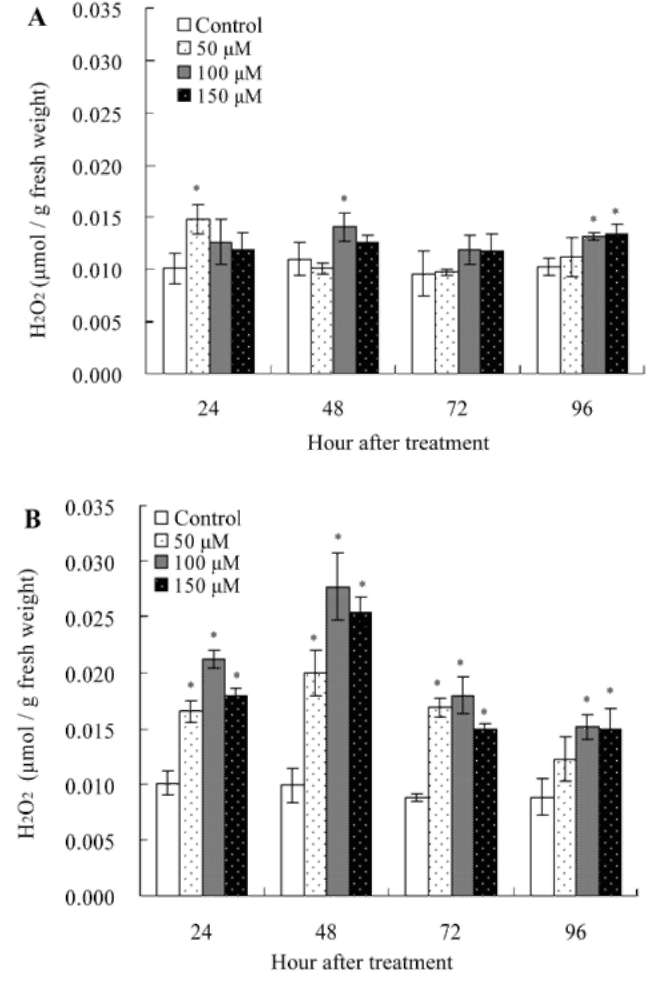
Gene-specific primer
[GSP1-1 (5'-GGCATCTCGCACCCCGAGTATTAAGGC-3') and GSP1-2 (5'-TCACAGAGCTCTTGATTTCTATTCCAA -3')] and an adaptor-specific primer [AP1(5'-GTAATACGA
CTCACTATAGGGC-3')] were used for the rice (Indica) pI 4.5 POX gene. PCR products from the first run were diluted 50 fold and 0.4 μL of diluted PCR products were used as a template for the second PCR. The second PCR reactions were carried in a total volume of 20 μL containing the following to a final concentration: 10X AdvantageR 2 PCR Buffer,
CTCACTATAGGGC-3')] were used for the rice (Indica) pI 4.5 POX gene. PCR products from the first run were diluted 50 fold and 0.4 μL of diluted PCR products were used as a template for the second PCR. The second PCR reactions were carried in a total volume of 20 μL containing the following to a final concentration: 10X AdvantageR 2 PCR Buffer,
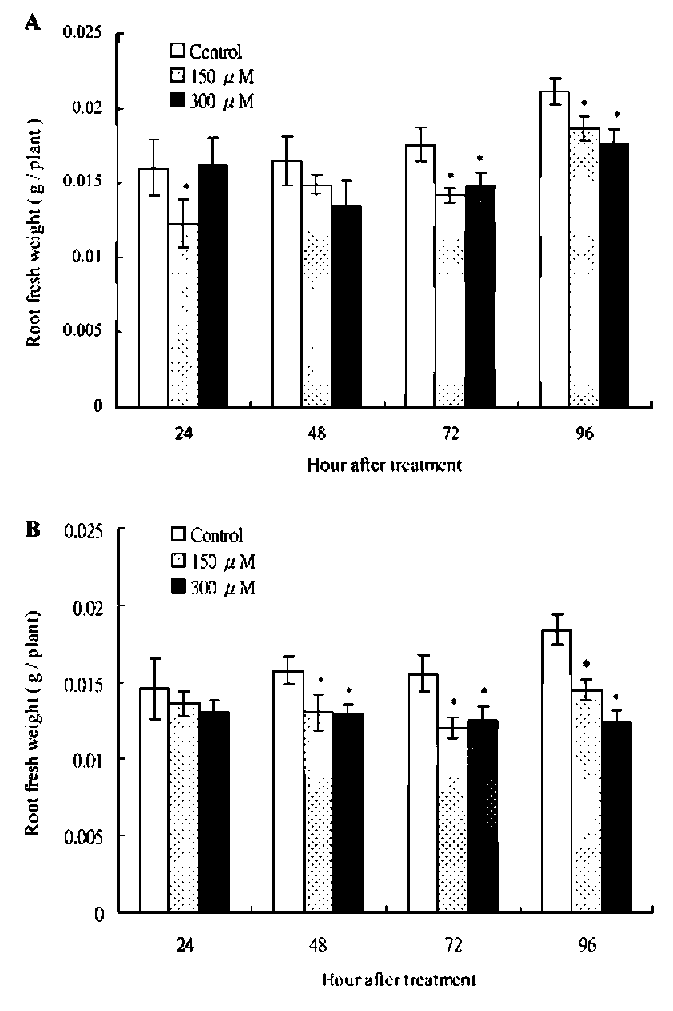
Figure 2. Effect of Cd on H2O2 accumulation in rice roots. Values are the means 士 SE of three replicates. Means significantly higher that the experiment control (Dunnett's multiple comparison test, P^0.05) are marked *. (A) for Tainung 67 and (B) for Taichung Native 1.
0.2 mM of each (dATP, dTTP, dCTP, dGTP), 0.2 pM of each primer (adaptor-specific and gene-specific); 0.4 pL of ligated DNA as template (either total digestion or partially digested and size selected), and 0.4 pL of 50X Advantage® 2 Polymerase Mix. The second PCR conditions were: 94。C, 25 s; 72。C, 3 min for 5 cycles; 94。C, 25 s; 68。C, 3 min for 25 cycles, and an additional cycle at 68°C for 7 min. Gene-specific primer [GSP2-1 (5'- CATCTCTCACAGAAGTTACTGCCCTGCT-3') and GSP2-2 (5'-AGAACACATGAGCTGATTACAATTTAG-3')] and an adaptor specific primer [AP2 (5'-ACTATAGGGCACGCGTGGT-3')] were used for the rice (Indica) pI 4.5 POX gene. The amplified products from the second PCR reaction were resolved using 1% (w/v) aga-rose and 0.5X TBE buffer.
PCR products cloning and sequencing
Figure 1. Effect of Cd on rice root growth. Values are the means 士 SE of six replicates. Means significantly lower that the experiment control (Dunnett's multiple comparison test, P^0.05) are marked *. (A) for Tainung 67 and (B) for Taichung Native 1.
The PCR-amplified products for both rice type pI 4.5 POX genes were resolved with low melting agarose 1% (w/v), and the obtained fragments (〜5 kb and 200 bp)
